In June of 2018, three friends and I rowed 100 kilometers in the annual EY-Parthenon Ringvaart Regatta. Here's the story of that journey, from training and race prep to the race itself and the aftermath.
Training
In late 2017, while I was studying abroad at the National University of Singapore, I started learning to row—indoors on an ergometer. Since I had no one there to coach me, I took videos of myself on the rowing machine and sent them to rowing friends in the Netherlands to get feedback on my form.
Once I got back to the Netherlands myself, I joined up with Daniël Vos, Wouter Raateland, and Sigur Gouwens to form “Keihard,” our Ringvaart crew at Delft student rowing club Proteus Eretes. Keihard translates literally to “rock hard,” which is of course how hard we were planning to row during the race. (It makes more sense in Dutch.) Over the first months of 2018, we took the next important step: asking fellow Proteus rowers to be our coaches leading up to the Ringvaart. As is tradition, we did so by baking them cakes.
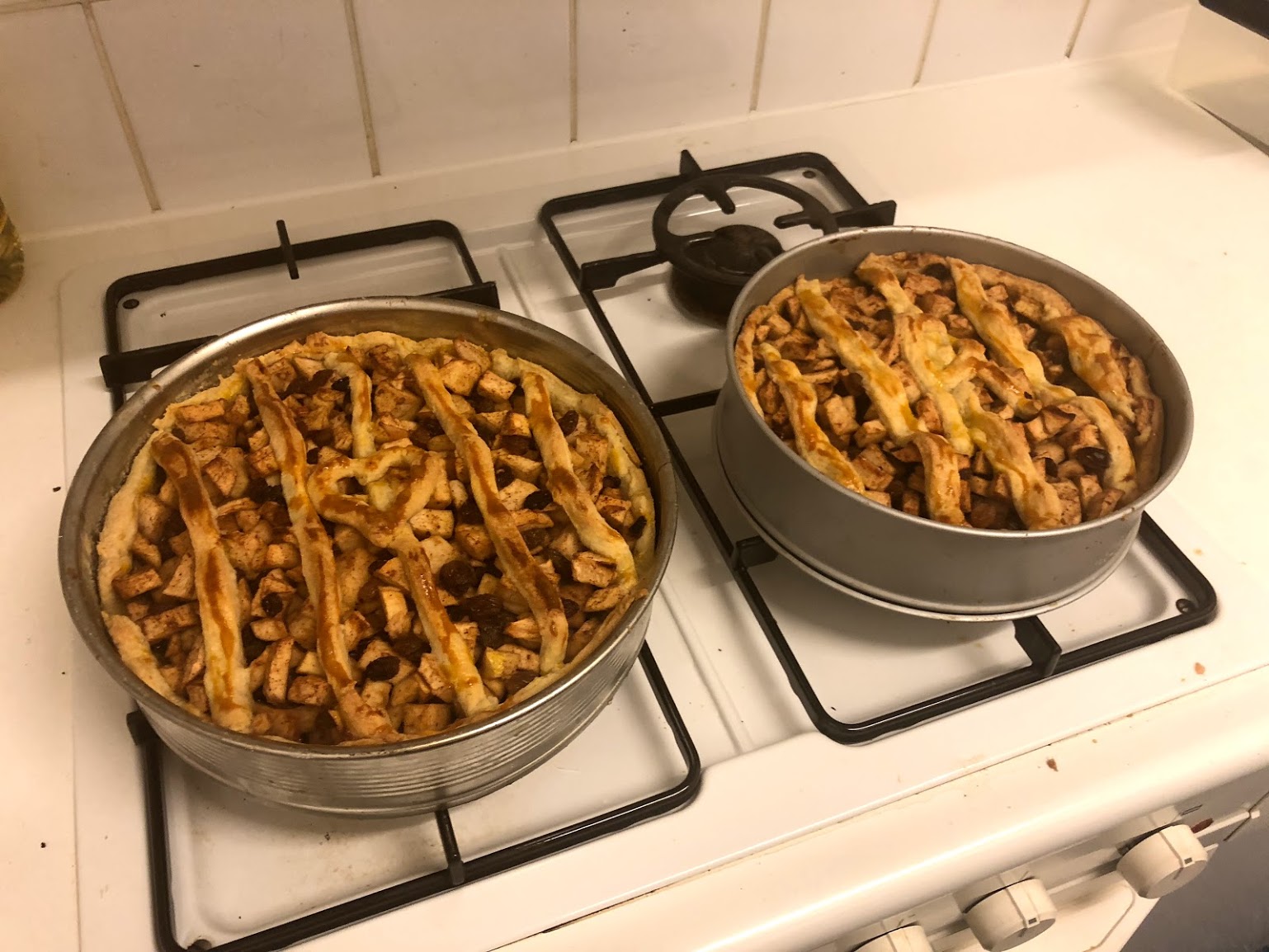
Two of the apple pies we baked for our coaches: Dalia Aljawaheri, Ruben Band, Suzanne Assen, Sjoerd Cnosse, and Jayme Freeke.
During those early winter months, most of our training was indoors on ergometers. As the weather started to warm in February, we also started training in the boat, beginning in the club's more stable, wider and heavier C-class coxed 4 boats. During this time, we'd sometimes get to Proteus at 7:00 a.m. for a boat training, only to find that the Schie still had chunks of ice floating in it from the previous night's frost.
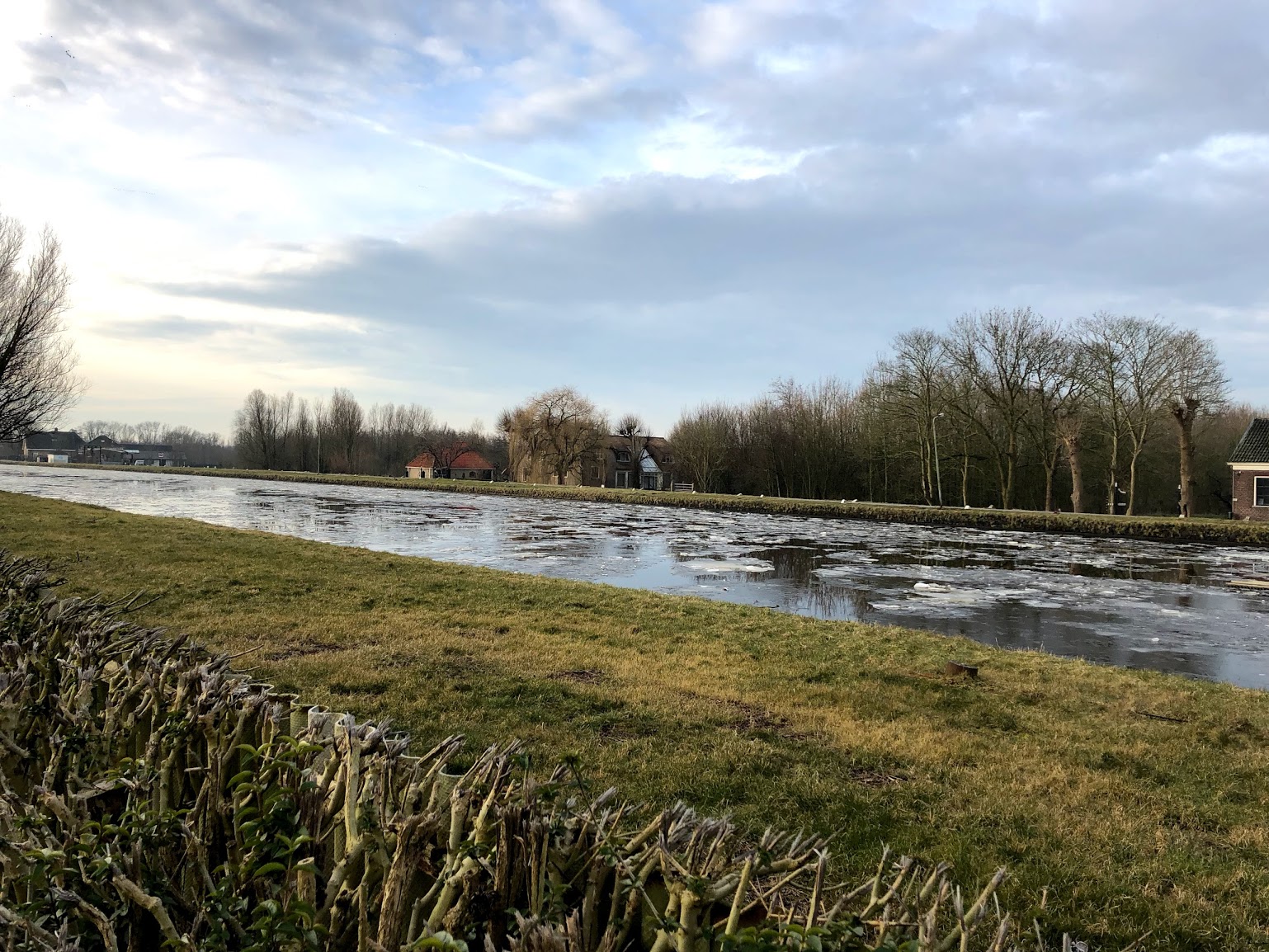
The Schie, the river we rowed on at Proteus, covered in chunks of ice.
That meant that our cox and coach could go back to bed, and that we'd be doing an indoor session instead. If it got really cold, we also had alternative ways to get our workout in:
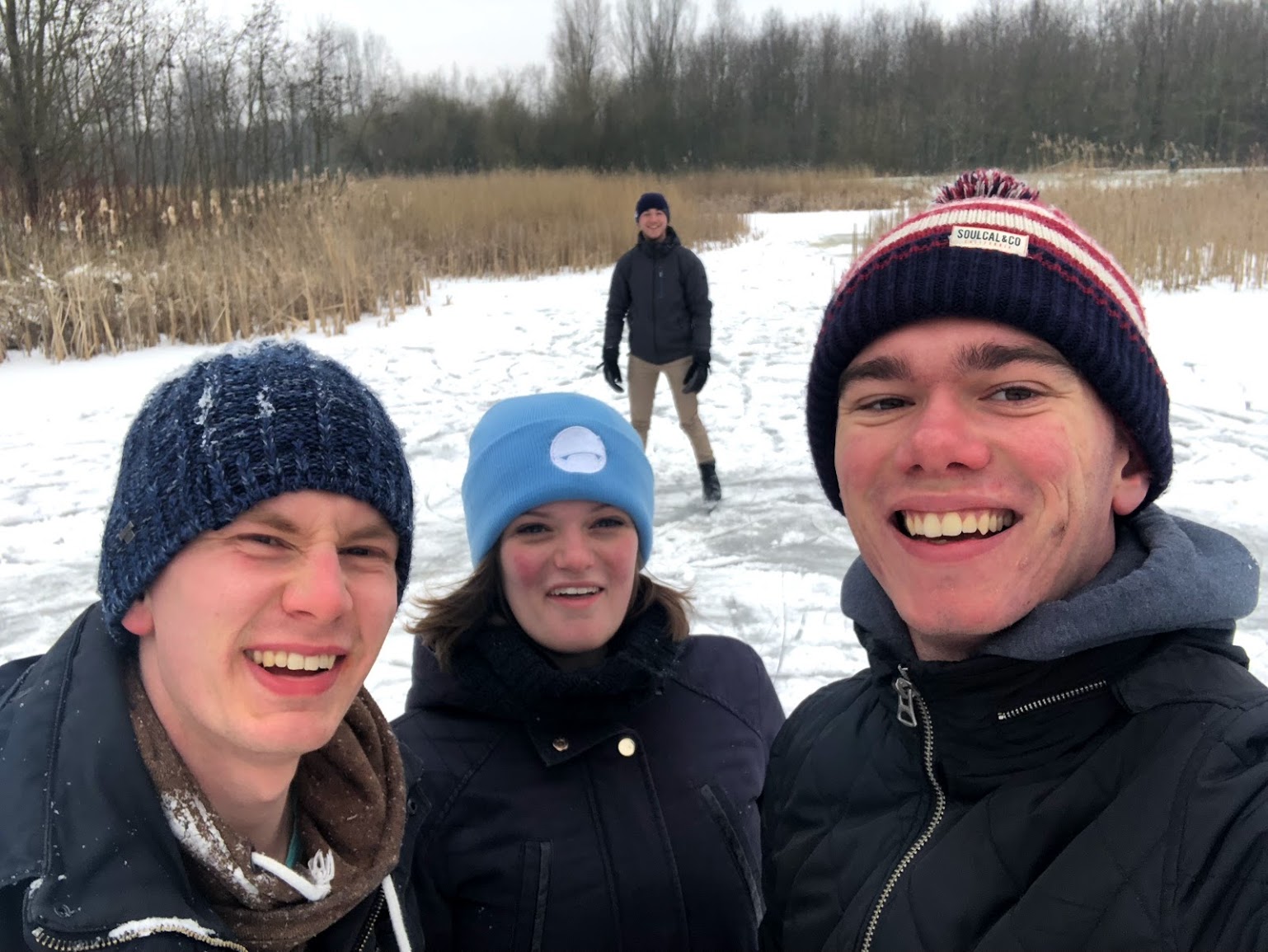
Daniël, Sigur and I went ice skating with our friend Lucy on one of these occasions.
As we progressed and spring set in, we eventually graduated into rowing a regular coxed four, which is much lighter but also much less stable. The first few sessions in that boat were definitely some of our toughest, but each session was a learning experience to be carefully logged in the coachboekje.
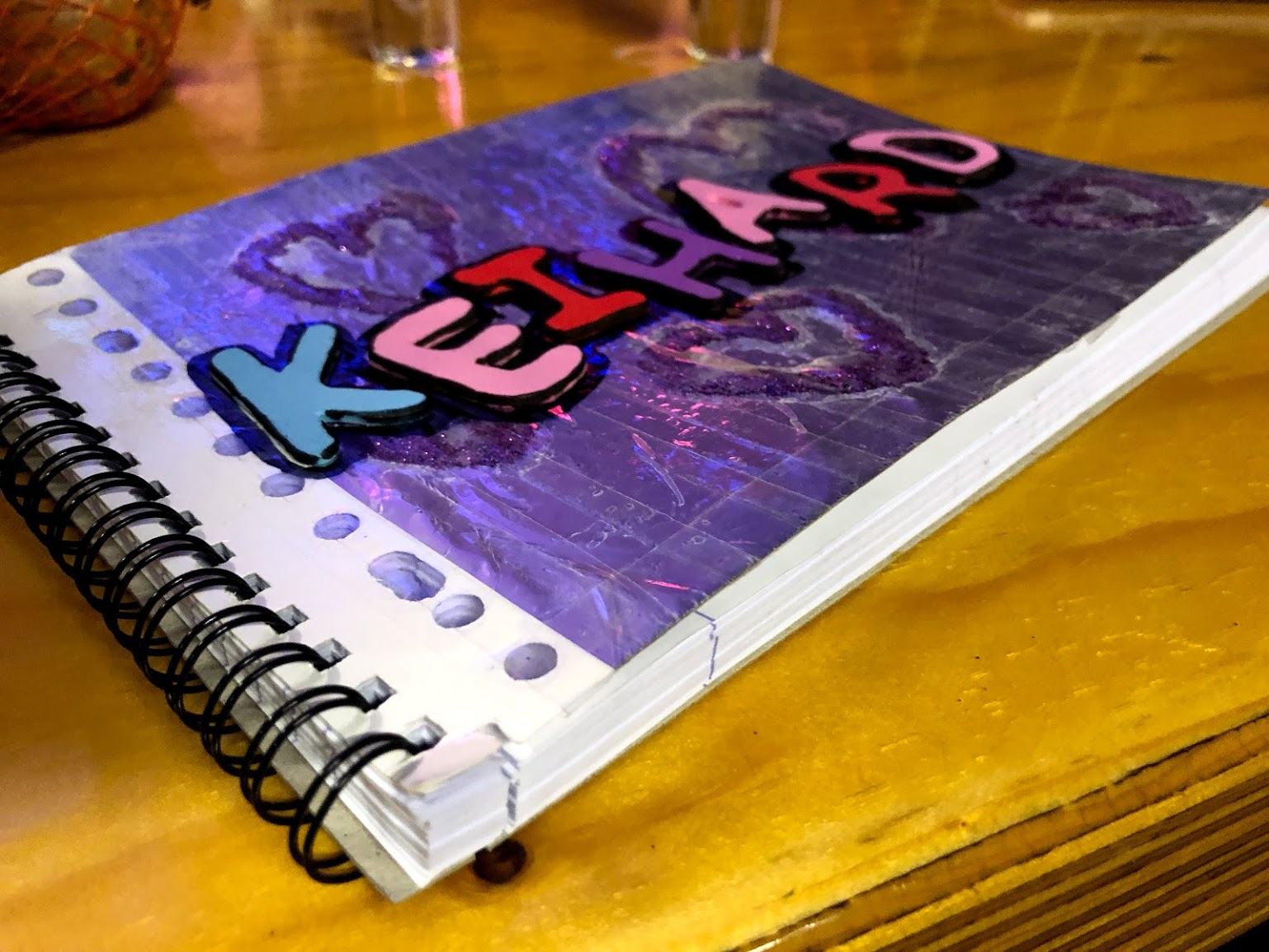
Our coachboekje, crafted by yours truly, in which the coaches logged our boat performance and personal focus points after each session.
From the end of February to the end of May, we got about thirty boat sessions in, plus about as many ergs, at a total of four sessions a week. An outdoor session would be ten to twenty kilometers, with quite a bit of planning involved for each session to find a time that worked for us and a coach and cox.
Some more memorable sessions included a seven-kilometer internal race to determine which Ringvaart crew got which boat, a Saturday row we did from Delft to Rotterdam and back, and a touring row we did on the day of the Prince Harry and Meghan Markle's royal wedding. (I remember because we watched the ceremony during our lunch break.)
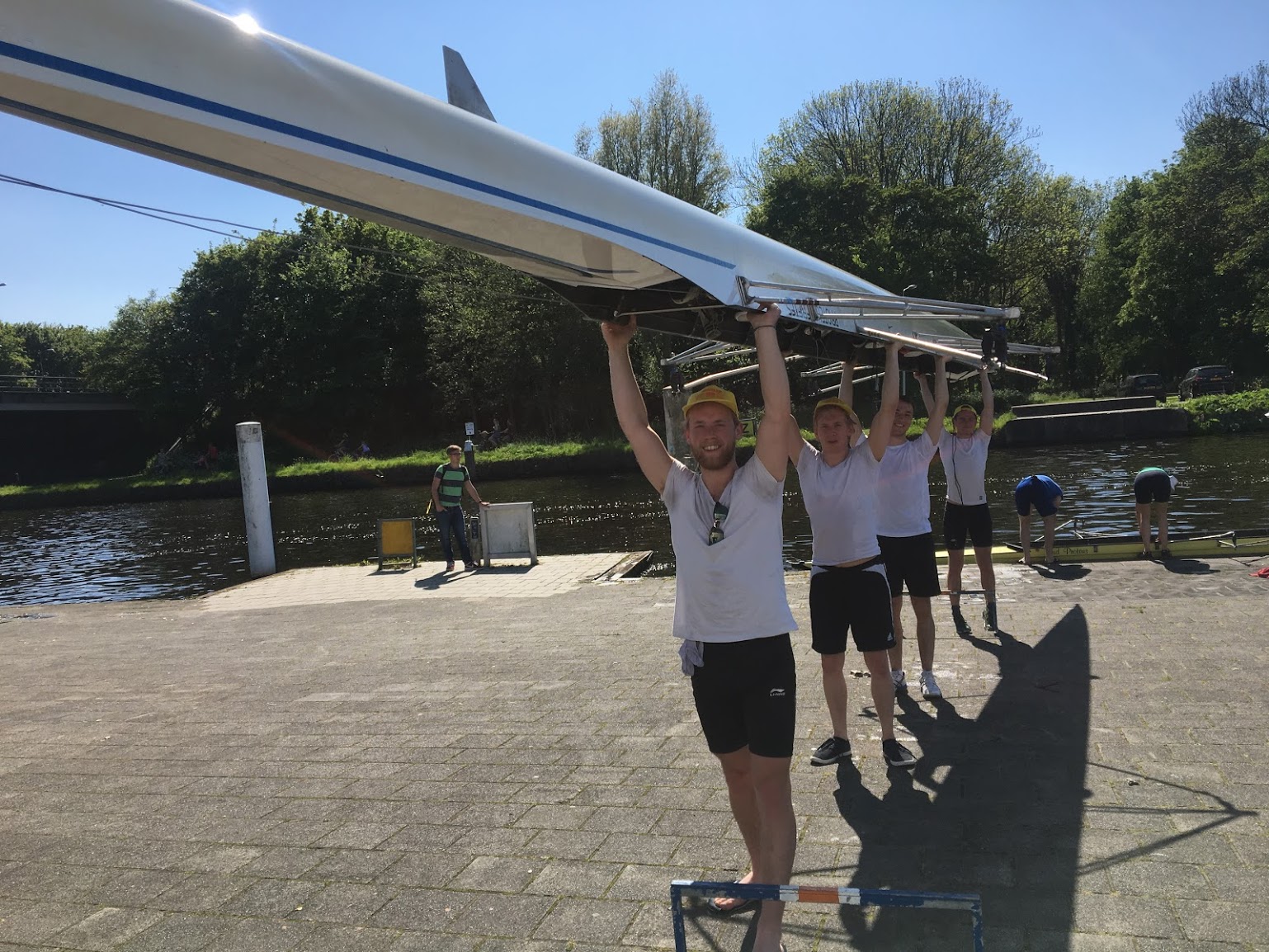
From front to back: Wouter, Sigur, Daniël, and me at the Proteus dock after the internal race.
As May drew to a close, it was time to start preparing for the Ringvaart.
Race Prep
Wouter came up with the idea that we could also raise some money during the race. We decided to support KiKa (kinderenkankervrij), a Dutch organization that finances research into treatments for cancer in children. He also set up keihardroeien.nl, a website through which our family and friends could donate money. A small portion would go to buying and printing our race shirts (with names and logos of supporters), and the rest would go to KiKa. In the end, we raised €815, of which €120 went to our shirts and €695 went to KiKa.

Screenshot of keihardroeien.nl, the website Wouter built for our crew.
Another big part of our preparations was food… lots of food. Our coaches had us eat 4,000 kcal a day in the days leading up to the Ringvaart, mostly in the form of whole wheat pasta and bread—gotta get those carbs. The night before the race, we also had one last ploeghap (crew dinner) with all our coaches.
For the Ringvaart itself, we focused on getting only things we could consume during our 10- or 30-second breaks; we got the following for each of the four rowers, plus extra for the cox:
- 5 bananas
- 8 energy bars
- 10 energy gels
- 6 liters of isotonic sports drink (self-mixed from powder)
- 2 liters of regular water
We also had to prepare our equipment. Because we—and our cox—would be sitting on our butts for the majority of the day, we fashioned seats for the boat out of yoga mats and pillows.
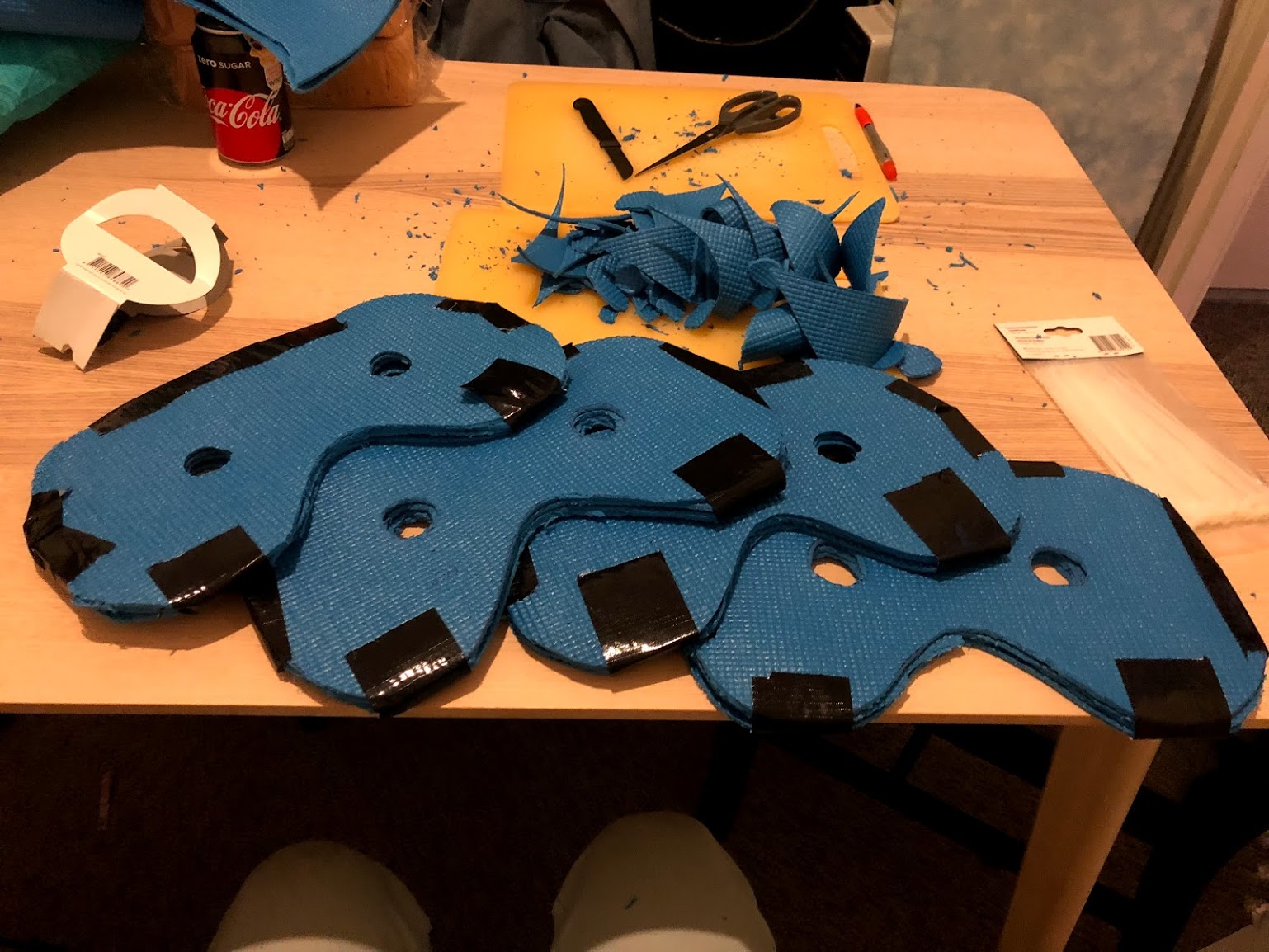
Our seats, made out of four layers of yoga mat, cut up and duct-taped together by myself and Daniël.
Our boat, the Gijs Kind bow-coxed four, needed some work too, from fastening the seats to stuffing food in the air holes. Because one part of the Ringvaart crosses the Kaag, a notoriously choppy lake known to have drowned some boats in previous years, we also built plexiglass wave shields and zip-tied them to the riggers.

Our boat the morning of the Ringvaart, equipped with seats, food, and our plexiglass wave shields.
Finally, we made a WhatsApp group for friends and family who wanted to follow our progress, from tracking where we were (we had a phone in the boat constantly broadcasting our location) to biking along with us.
Ringvaart
June 6th 2018 was race day. We had a 3:30 a.m. wake-up call and took the 4:12 a.m. train from Delft to Leiden Centraal. From there, we made our way to Asopos de Vliet, the Leiden student rowing club where the Ringvaart started, for our 6:20 a.m. check-in.

The route of the 2018 Ringvaart, starting in Leiden and passing by Schiphol, Amsterdam, Haarlem, Kaag, Leiden and Leidschendam, and finishing in Delft. (Google Maps; route description; archived version)
We found Gijs Kind among the 170 other boats and prepared it for our 7:30 a.m. start time. Everything was running smoothly, so everyone was in the boat quite early: Daniël on stroke, Sigur on three, me on two, Wouter on bow, our coaches Suzanne and Dalia respectively in the cox's seat and on a bike seat. Then, at 7:12 a.m. we were off!
We had come up with a simple strategy for the race: every ten to fifteen minutes, Suzanne would tell the stroke or bow pair to fall out for ten strokes. During this time, we'd chug down some isotonic water and, every third such pause, a snack of our choice. After ten strokes, Suzanne told us to switch and so that the other pair would get their drink break while the first pair continued rowing. Using this strategy, the boat would never come to a complete stop, preventing us from having to do lots of starts.
The strategy worked great for the first few hours. We were soaring along, making quick progress and blasting everything from the Red Hot Chili Peppers to Jebroer on the Bluetooth speaker we brought along. (And lots of Badman Ollo… see our full playlist on Spotify.) After 25 kilometers and 2 hours, 21 minutes, we reached the first checkpoint (C1) at Oude Meer at 9:33 a.m. Because it was going so well, we decided to skip the stop and just keep going—rowing past all those docked boats was a blast.
We pressed on, and the first portion of this second leg was going great: once in a while, Suzanne would yell that we were passing an eight or closing up on another four, which kept morale high in the boat. But once we reached the mid-thirty kilometer mark, it got painful. After three hours of nonstop rowing, we started to feel our backs. At 11:20 a.m. we reached Zwanenburg (C2, at 42 kilometers) and docked the boat to stretch our legs and backs, and to take our first ibuprofens of the day.
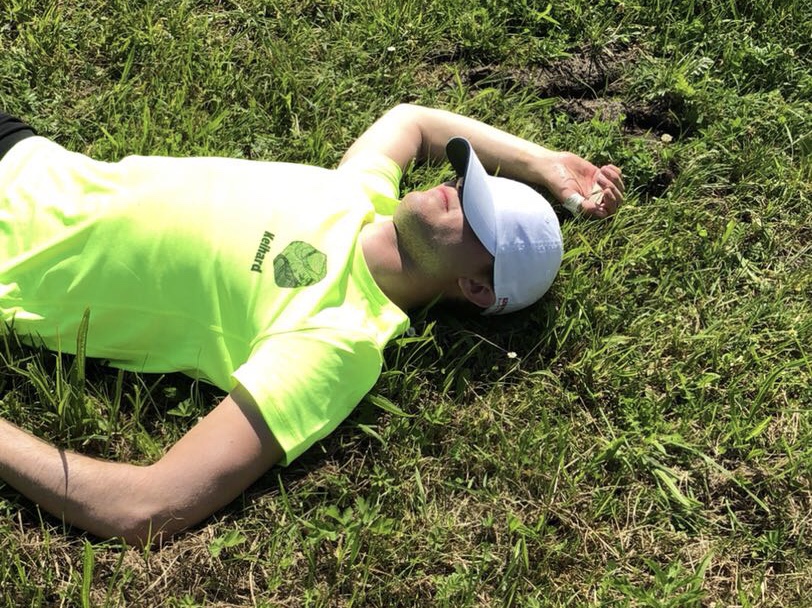
How most of us looked at C2, appropriately captioned ‘Daniël is ded’ by Dalia.
Everything between C2 and C5 is a bit of a blur. Some highlights include:
- An old gentleman's choir singing Dutch sailor songs at C3, which we reached at 1:25 p.m.
- Our friend (and Daniël's twin) Jelle joining Dalia in biking along with us… and throwing Chicken McNuggets into the boat for us.
- Crossing the Kaag, between C3 and C4, of which I mostly remember doubting whether we were going to finish the race at all.
- Reaching C4 at 2:49 p.m. and taking my last ibuprofen of the day to power through the choppy waters leading up to the last checkpoint, which were full of recreational boats (the worst).
Finally, at 4:14 p.m. we reached C5, which was the required final stop at Leidschendam at 88 kilometers. (This stop was also the only one which didn't count against our time, up to a 45-minute maximum.) We didn't know it yet, but the hardest part of the race was now behind us.
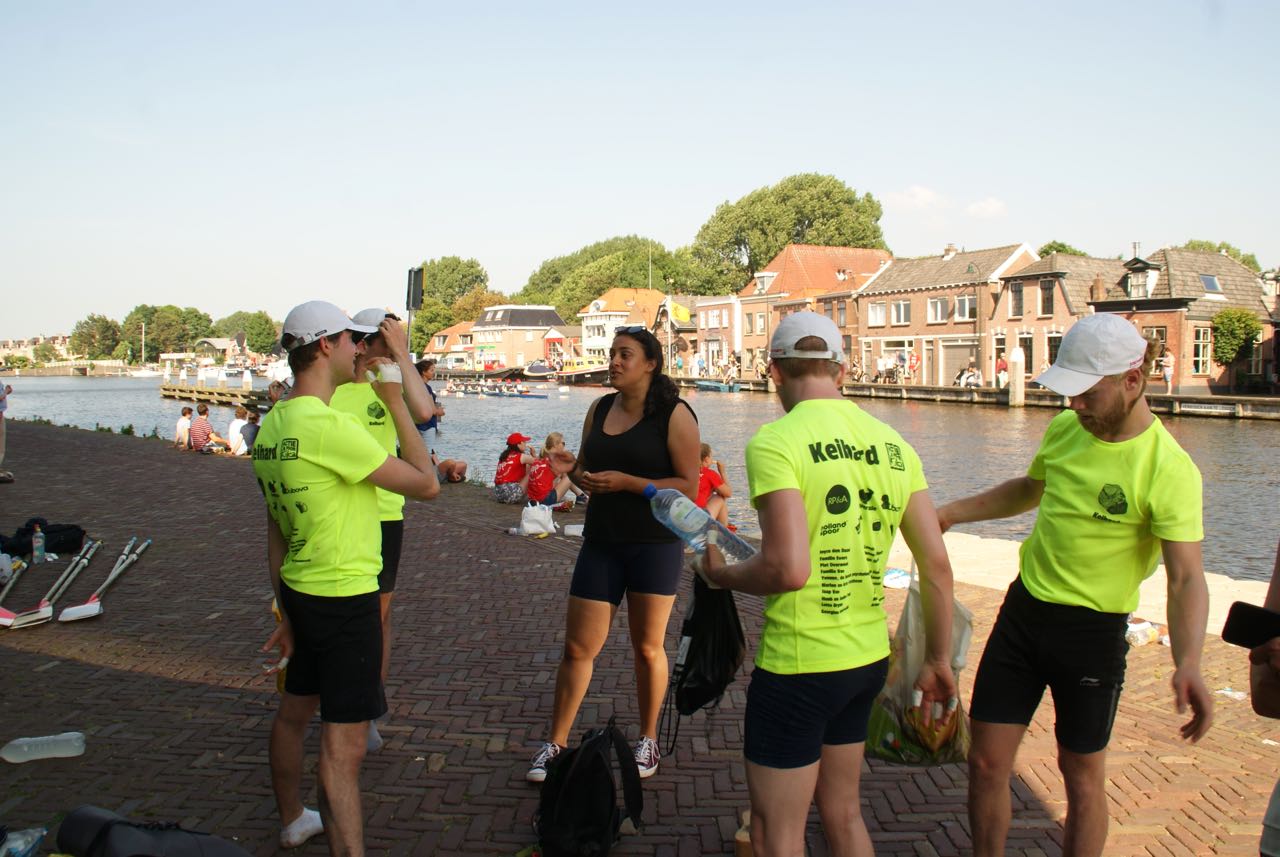
A pep talk from coach Dalia—who biked along with us the entire 100-kilometer race!—at Leidschendam.

Putting the boat back in the water at Leidschendam.
From Leidschendam to the finish in Delft, Daniël and I switched seats so that I was in the stroke position. This was by far my favorite part of the race: the water was flat as a mirror, and as we got closer to Delft, more and more friends and family joined our bike-along crew to cheer us on. After struggling through the Kaag with just the five of us in the boat, having twenty people by our side made the time and kilometers fly by.
Because of this large bike-along crew, this was also the part of the Ringvaart where we got the most photos and videos. Most of the ones below are courtesy of Wouter's dad—thanks!
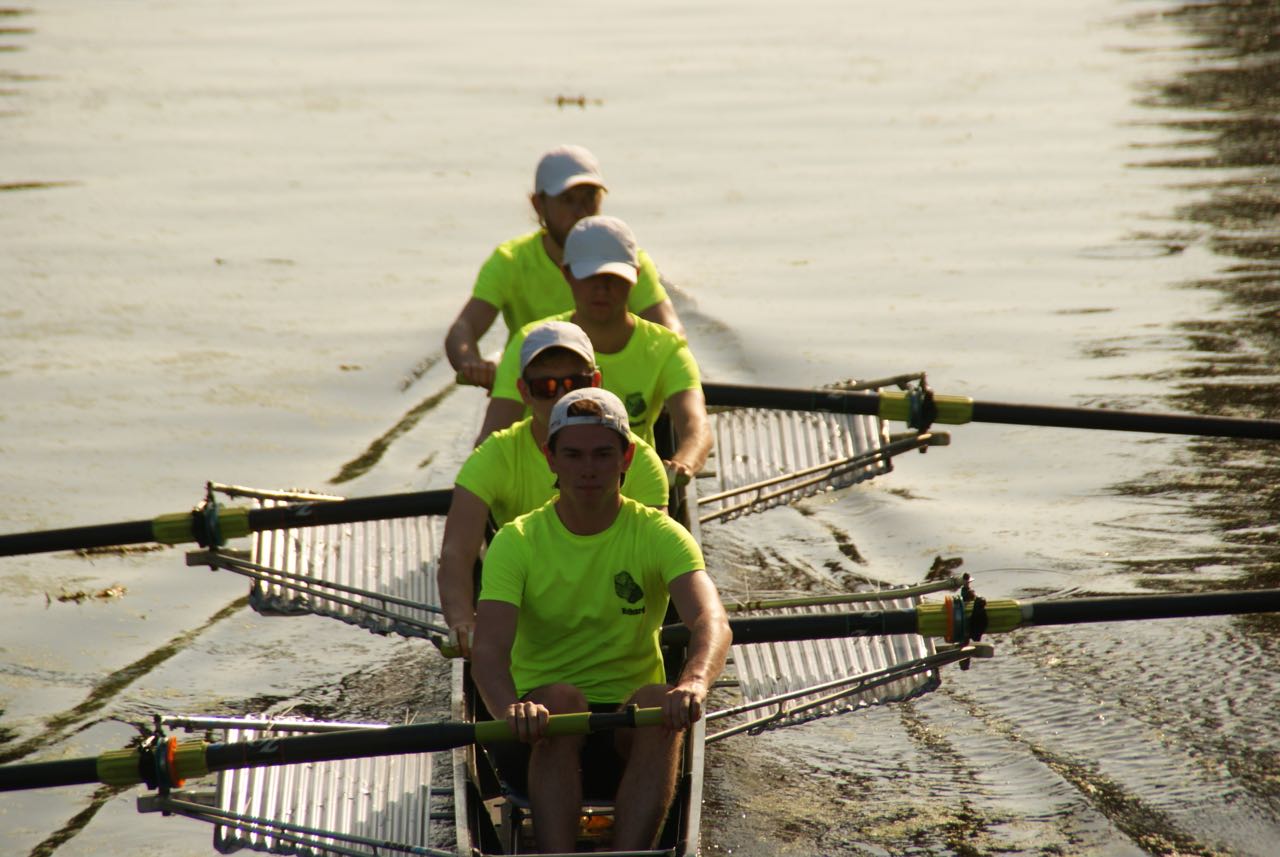
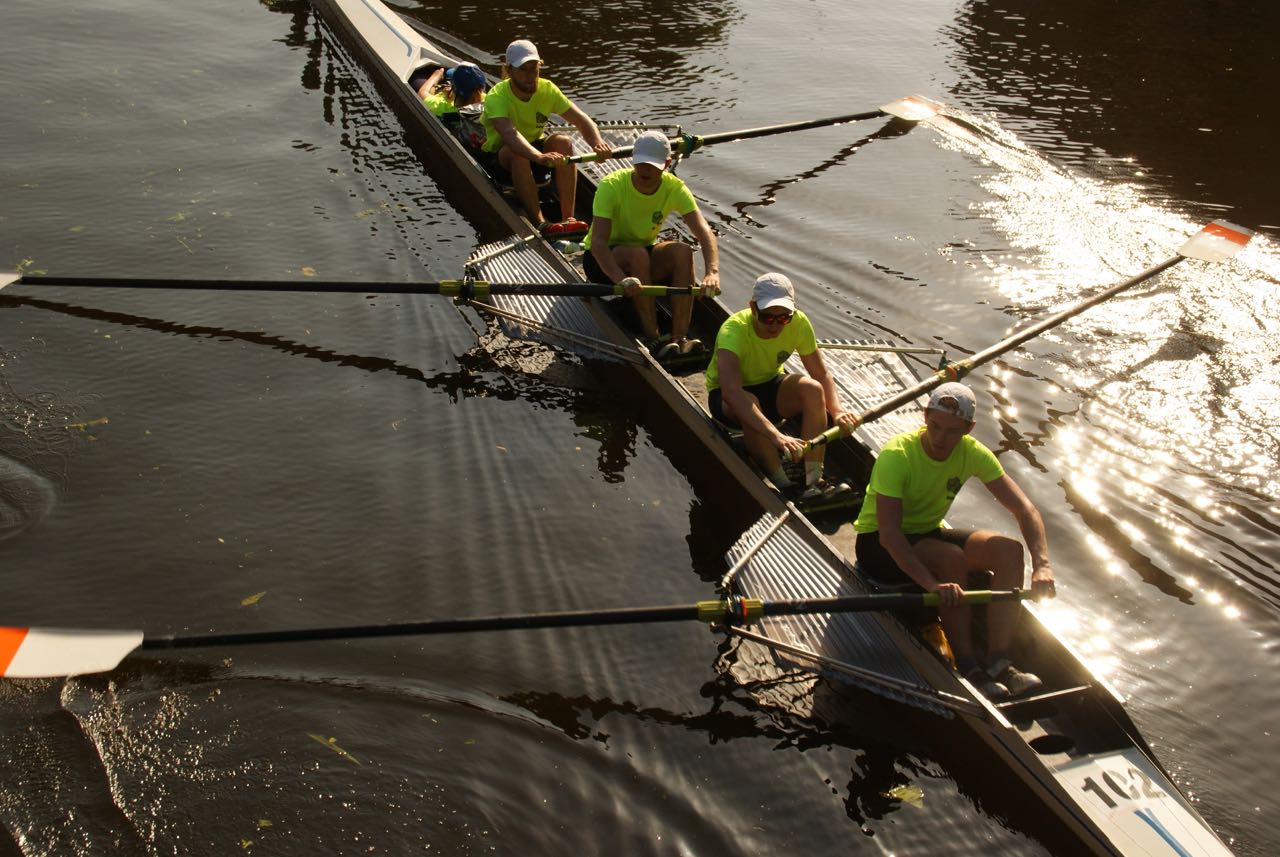
Coming out from under the bridge in the video above.
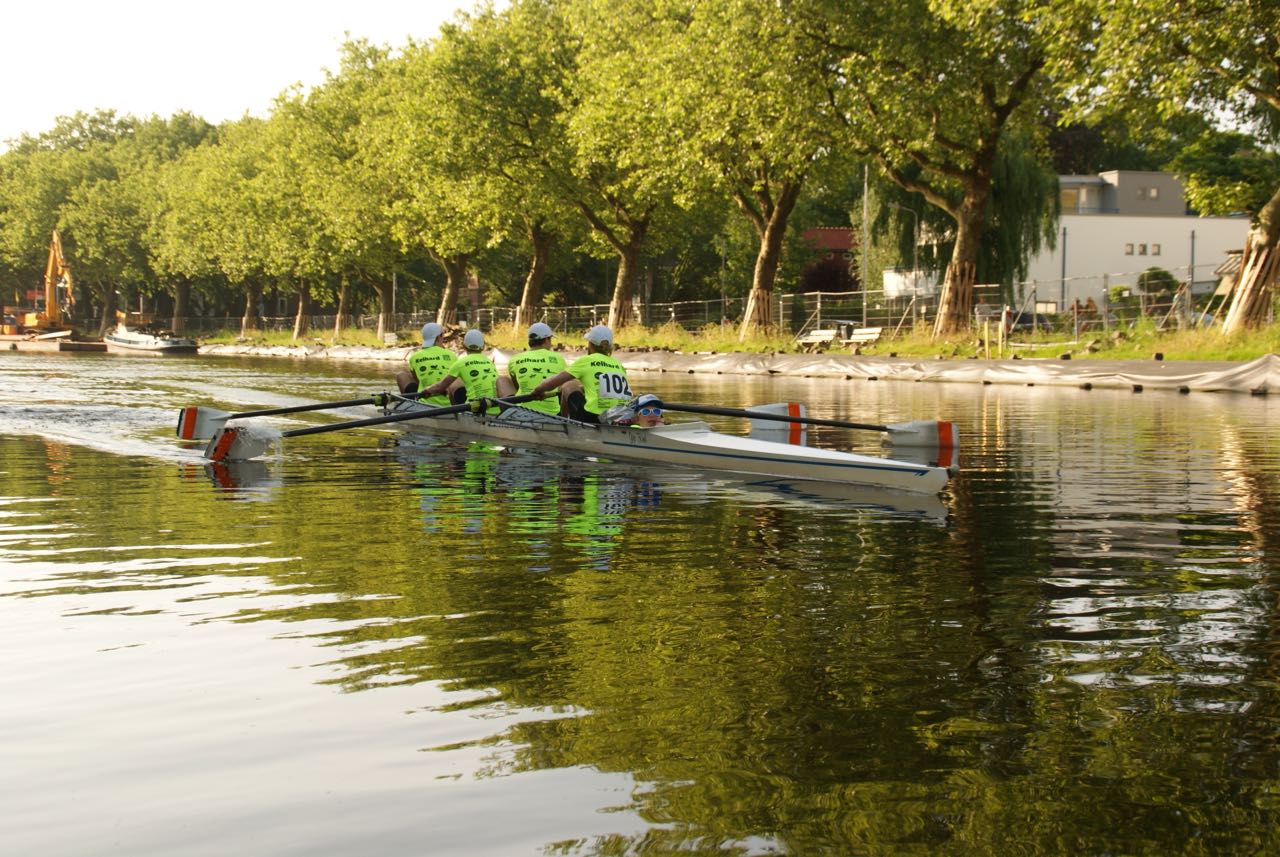
Rowing along the river beds that the municipality of Delft was rebuilding at the time.
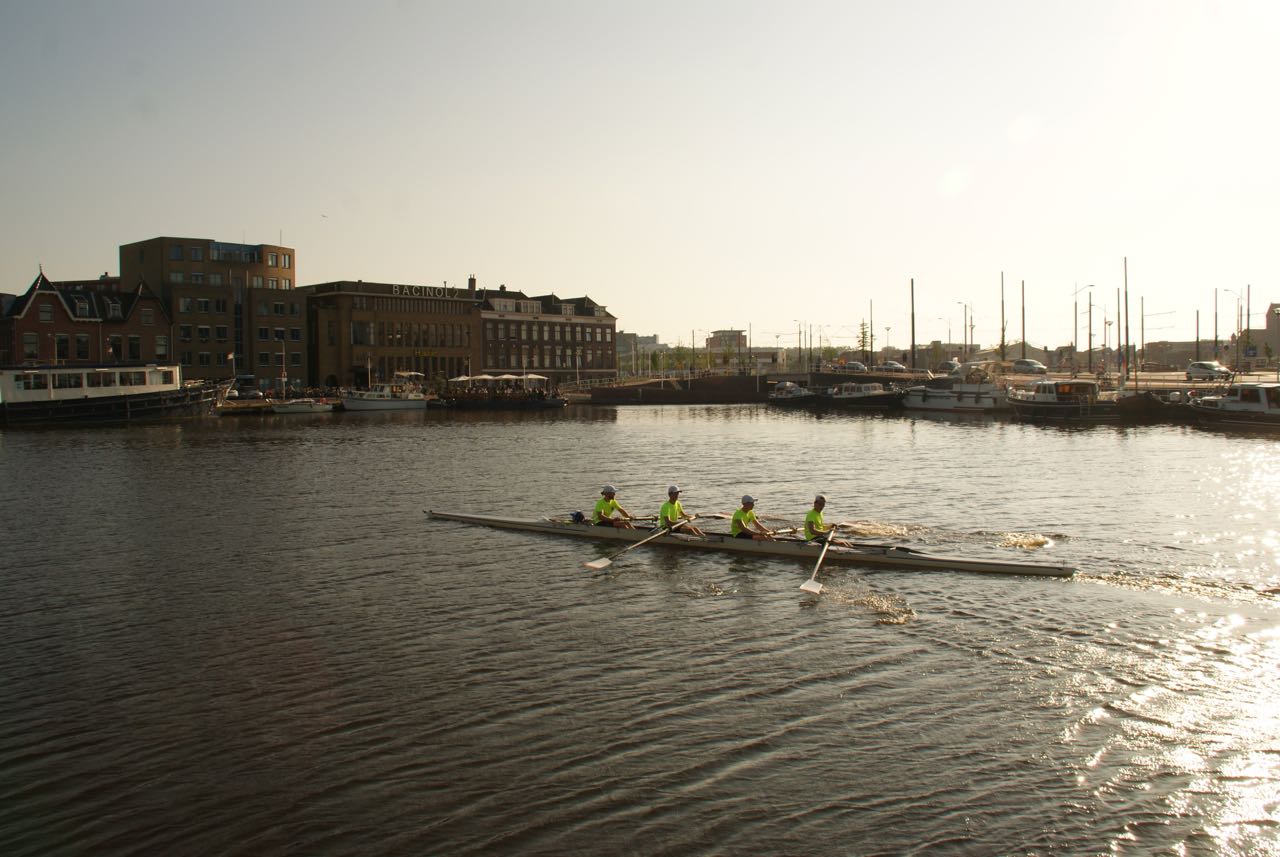
The last turn before the final stretch to Proteus, right by the city center of Delft.
As a final (slightly cruel) twist, the last 600 meters—reached only after rowing the first 99.4 kilometers of the Ringvaart—was another, separate race: the Powerhouse Sprintbokaal. Of course, for this final bit, we went all out.
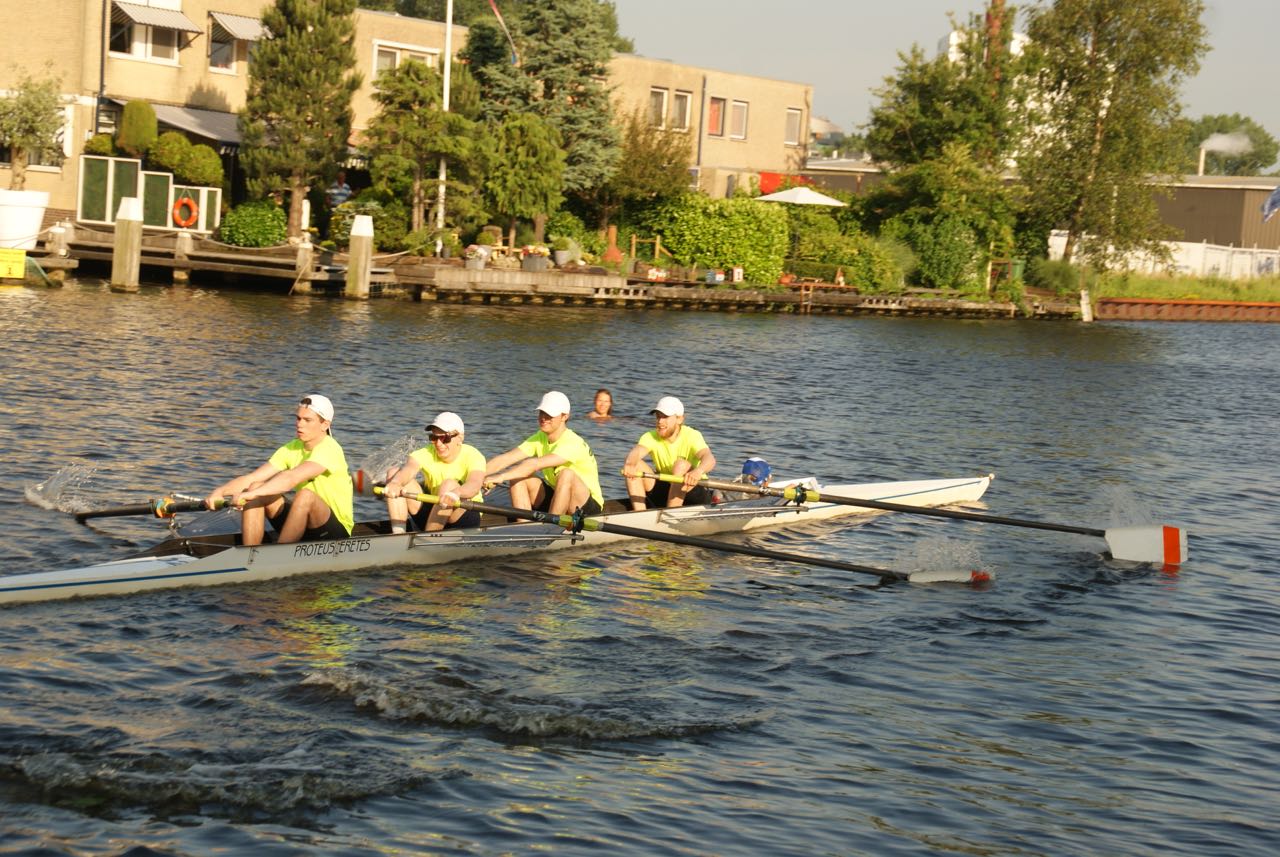
Our form suffered a bit and there was lots of splashing, but we sure felt like we were going fast in the final sprint.
And then we finished at 6:17 p.m. after rowing for 10 hours, 8 minutes, and 16 seconds! We came in 31st out of 171 boats overall (times were not adjusted for boat type or gender), and 8th out of the fours. Considering our first time in a boat was four months before, we were super proud of this.

Our medal for participating in the 43rd EY-Parthenon Ringvaart Regatta.
After we finished, some friends were nice enough to take the boat out of the water, cleaned it and put it inside while we received flowers and beers from our supporters. The Ringvaart is also followed by a music festival, but most people who rowed the race don't really make it there. It was the same for us: after we ate our free pasta dinner, we went home and fell asleep.
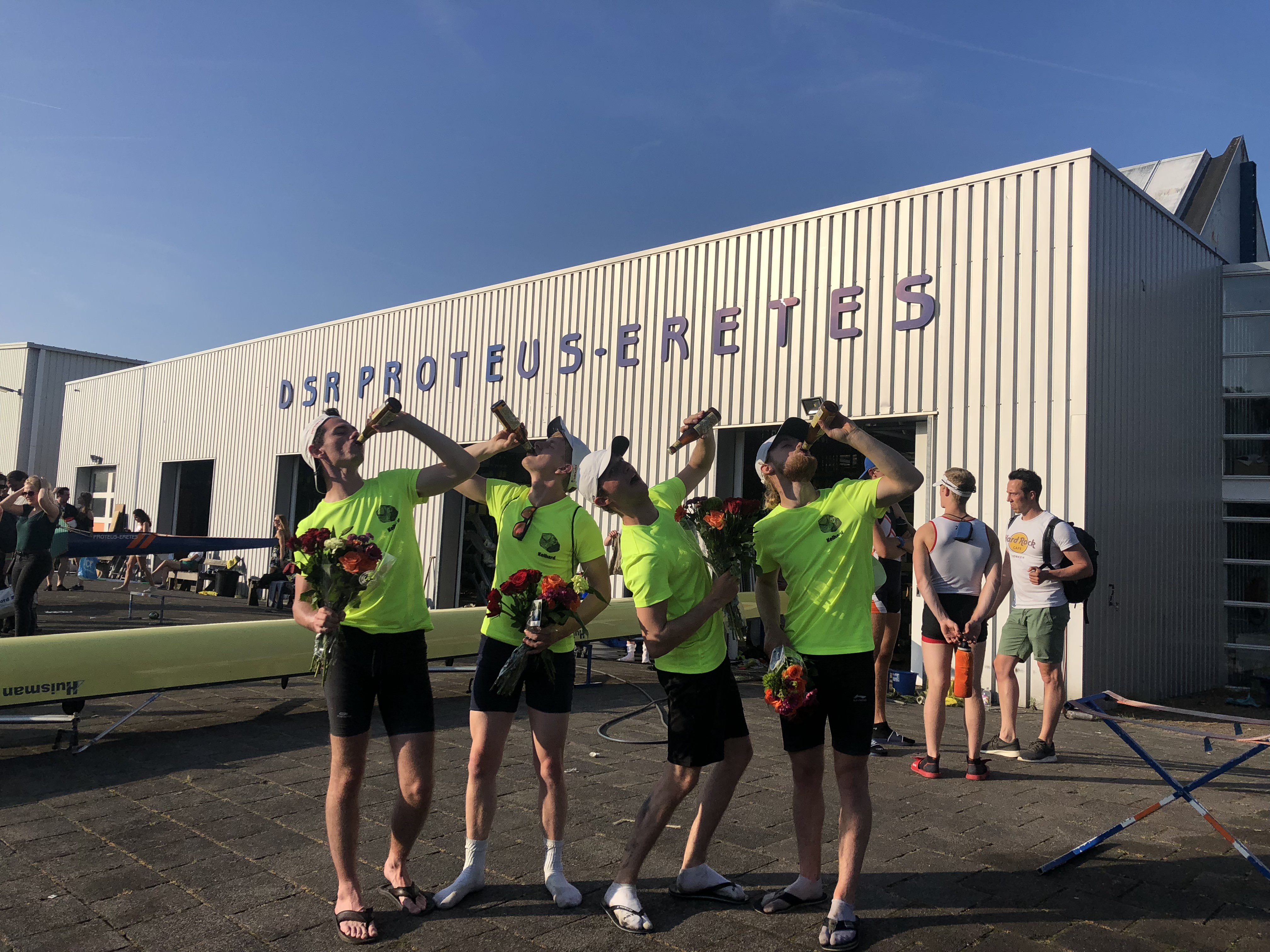
And, of course, our celebratory beers and flowers back at Proteus.
Aftermath
I'd like to say thanks to all these people who were a part of the Ringvaart for me:
- My crewmates: Sigur, Wouter and Daniël
- Our cox during the Ringvaart: Suzanne
- Everyone who sponsored us and supported KiKa through keihardroeien.nl
- Our main coaches: Dalia, Ruben, Suzanne, Sjoerd and Jayme
- Everyone else who coached us: Jelle, Sophie Koopman, Marjolein Bouwmeester, Bastiaan Verton and Albert de Vries
- Everyone who coxed us during training: Marieke van Leeuwen, Jari de Keijzer, Jelle, Janine Nijhuis, Wies van Wetten, Stephanie Wiechers, Sophie Bekker, Ruben van der Heijden, Marije IJpma, Lotte Wellens, Karim Osman, Jorn van Beek, Jeannet Liang, Dalia Aljawaheri and Anna Zonneveld
- Everyone who biked with us during the Ringvaart
- The Proteus RingCie
- The organizing committee of the 43rd EY-Parthenon Ringvaart Regatta
After the Ringvaart, two of us also decided to continue rowing: Daniël has joined Proteus and I've joined the Edinburgh University Boat Club.